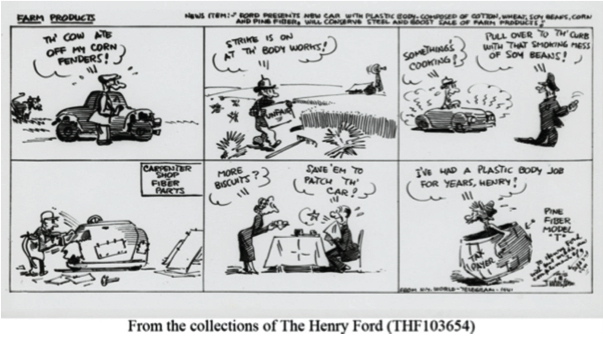
Factoid of the Month: Soybeans and Automobiles: From Henry Ford to Biodiesel
In the ’30s and early ’40s Henry Ford was determined to make bodies and other car parts from soybean phenolic resin. By 1935 he was already growing 12,000 acres of soybeans. He planned to use one million bushels of soybeans per year for various automotive parts and liquids. – To prove his point, in 1941 he held a press conference where he slammed a fire axe into the body of a Ford made of soybeans, causing no apparent damage. He then rewarded the press corps with a soybean lunch, including soybean soup, soybean steak, soybean coffee, soybean milk and apple pie with a crust made from soy- beans. So what happened to Henry Ford’s soy- bean plans? By the time World War II was over, Henry Ford was losing control of the business, and his soybean plans were forgotten. Today, soybeans are being used to produce biodiesel, which according to studies done by the University of Minnesota and St. Olafs College, is much more efficient to produce than corn based ethanol. The studies found that ethanol generates only 25% more energy than required for its production, where biodiesel generates 93% more energy. One small problem. According to a study by the National Academy of Sciences, if all American corn and soybean production were dedicated to biofuels, they would only satisfy 12% of gasoline and 6% of diesel demand.
September, 2013